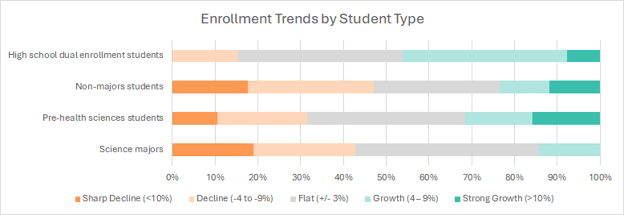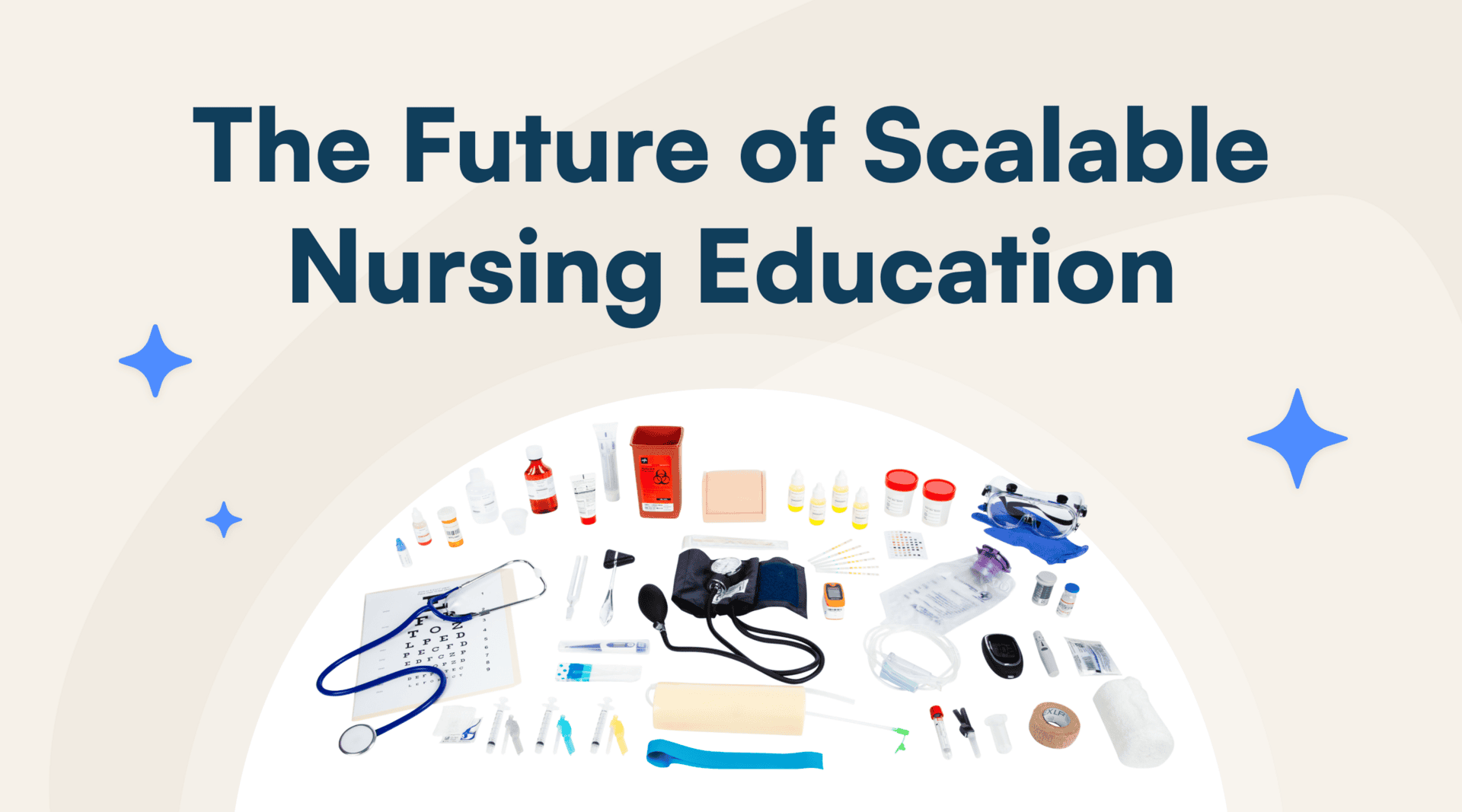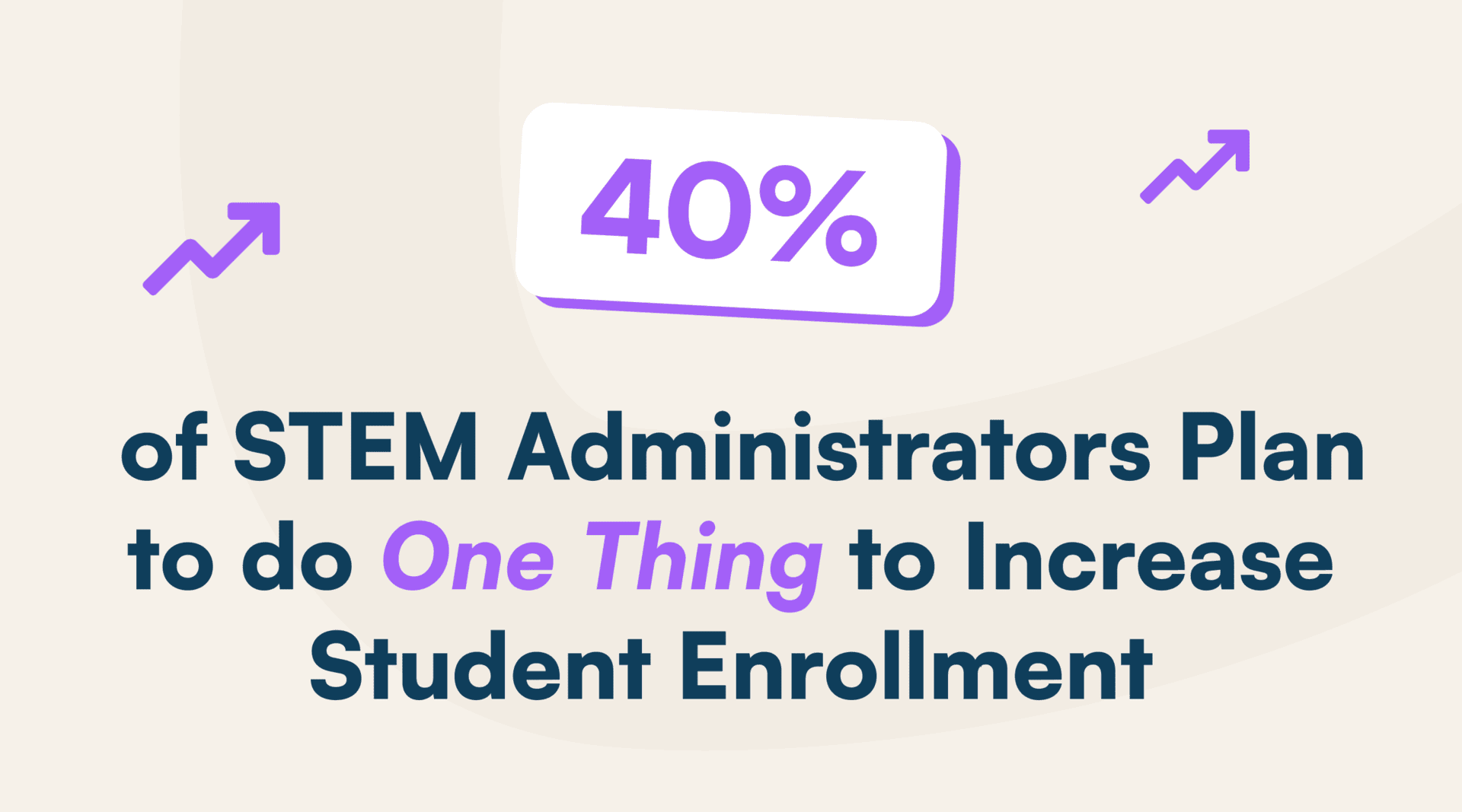While online education has been on the scene for 35+ years, 2020 certainly put it in the spotlight. In fact, just a decade ago, 75% of college students took all their classes in person, with only 13% taking some online classes. Obviously, those numbers flipped dramatically during 2020, but then something strange happened.
Instead of slowly reverting to pre-pandemic levels, as some predicted, college students have increasingly chosen to take classes online. In 2022, more than half of college students enrolled in an online class, and according to new data from CHLOE 9, 60% of chief online learning officers report that their institution’s online courses now fill up first.
What’s more, 77% also said that students using on-campus housing are asking for online options. Similarly, student demand for online science labs shows an upward trend—presenting programs with a new opportunity to boost enrollment amid declining interest in on-campus courses.

Increased Demand for Online Lab Options Coincide with Decreased Enrollment in On-Campus
Different factors have impacted the downward trend in on-campus lab enrollment, like falling birth rates, rising college tuition, and shifting needs of different student populations. For example, as this full-time, working student who was surveyed for the 2024 Annual Lab Report shared, “Online learning is very convenient for me as a single working mother.” Still, another part-time student commented, “The ability to have an online lab increased my course choice options and optimal schedule organization.”
In original research conducted in the summer of 2024, 300 surveyed deans/department chairs and instructors revealed what’s happening with their lab courses. More than half cited declines in enrollment in on-campus labs, while nearly 75% reported continued growth in online options and increases in demand for hybrid/blended courses. If the implication wasn’t clear, this research underscores the significant impact NOT offering labs online will have on enrollment.
The Importance of Online Learning for Today’s Students
Source: 1878 surveyed students from the 2024 Annual Lab Report
88% of students who took an online science course cited it was important to them to take the course online.
32% said they would enroll at another institution and 30% wouldn’t enroll at all if online options weren’t available.

These numbers aren’t surprising, when broader trends are taken into account. In the 2024 Voice of the Online Learner, 77% of surveyed students said they decide on the online modality before any other factor, and 60% would choose programs at a different school if their preferred college/university didn’t offer their courses online.
“There aren’t enough options for chemistry classes for students with full time work schedules. No night classes and no online classes available, and there’s a good chance I’d have to enroll elsewhere to complete the pre-reqs I am looking for.”
-Chemistry student, 2024 Annual Lab Report
The Advantage of Embracing Online Lab Courses
Think about it this way.
You can go fishing with a regular old pole, and it should work—although it will be slow going and you might even come up empty on most days. On the other hand, you can trawl the sea with a large boat net, covering more ground faster. You can guess which will come up with more.
Similarly, when you create more options for online versions of your face-to-face lab courses, you can cast a wider net. You’ll open yourself to a wider student population, whereas those unable to adapt to the changing needs and preferences of their learners risk falling behind and driving those students elsewhere.
In fact, 42% of today’s online learners are adults who have returned to higher ed. They have many choices when it comes to education and view online learning as a fast and flexible way to help them rejoin the workforce, complete an industry requirement, or achieve personal growth. In addition, online learning provides the needed flexibility a growing number of non-traditional students as well as on-campus students with competing responsibilities need.
“I’m so glad I was able to take my chemistry course online. The courses I needed were overlapping. Plus, I’m a student athlete with other obligations, so I would have had to figure something out around if this lab had not been offered online.”
Chemistry Student, Western Texas College
It’s why 39% of deans and department chairs said they plan to increase the number of online lab courses offered online.
While offering more courses can attract new students, how you structure that experience can also improves student retention and increase the likelihood students will take more courses. For Ricki Burnett Arndt, Laboratory Specialist at Utah State University, Brigham City, and the 2024 Golden Goggles Student-Centered Educator of the Year, that’s exactly what they’re striving for. “Across all of our courses, I keep the structure consistent in Canvas. So when students have a new course, there’s no learning curve for where things are on Canvas and where to go to find their materials. That comfort helps students feel prepared, and many students have mentioned this helps them want to take another course with us, because they don’t have to do the guessing game and they know what to expect.”
The Takeaway: Online, Hybrid & Blended Learning Attract More Students & Boost Enrollment
On the upswing over the last decade, demand for online—or at least partially online—learning options has only accelerated. So if you’re not adapting your courses and programs to an online modality, you’re missing out on a large pool of learners, including non-traditional working adults, dual enrollment high school students, and even your current on-campus students.

In fact, 75% of chief online learning officers surveyed for the CHLOE 9 reported increased demand for online options from on-campus students, which is why 70% said they were focused on creating online versions of their institution’s on-campus courses.
Still, lab courses often remain untapped or are the last to go online. Yet, with nearly a quarter of the total U.S. workforce requiring STEM educational backgrounds, and occupational needs for science-based backgrounds projected to grow over the next decade, having the right programs online is likely to attract more students and secure enrollments. Just take the University of California’s San Diego Division of Extended Studies for example.
When they began delivering high-quality online labs as part of their Science & Sustainability program, the division experienced enrollment gains of up to 8,000 students per year, proving that offering online options can increase enrollment and bolster access to students whom you otherwise might not attract.
So if you’re ready to make the shift or expand your offerings but are wondering how you can make your program stand out amidst other online offerings, the answer lies in quality. In our next post, we’ll focus on how instructors are using lab modality, engagement, and different tactics for better preparing students to foster high quality lab experiences that are comparable to the face-to-face lab experience.
Discover more articles

Science Interactive Launches New Nursing Fundamentals

What Clinical-Ready Actually Looks Like (And How to Get There Sooner)


